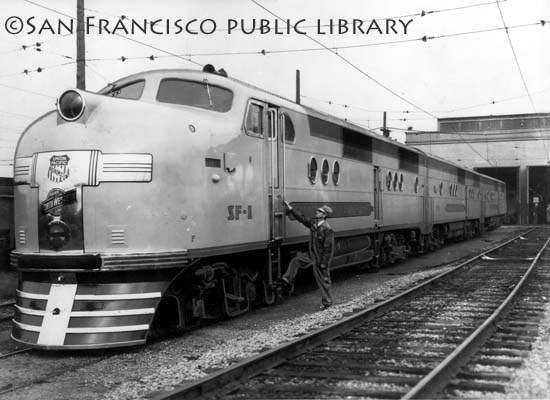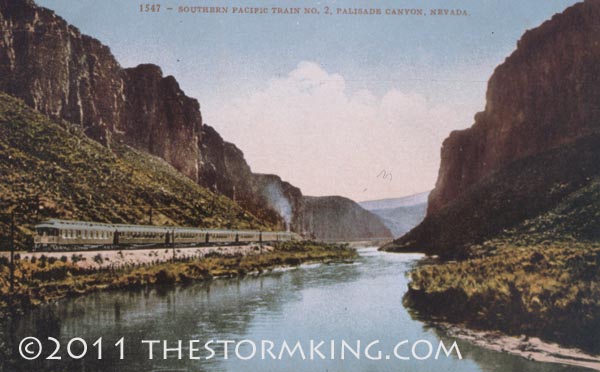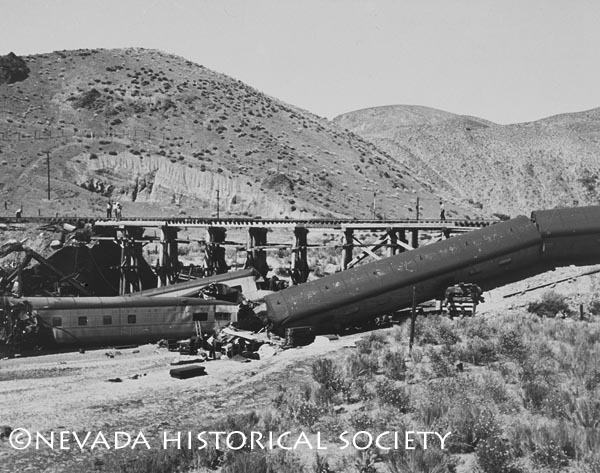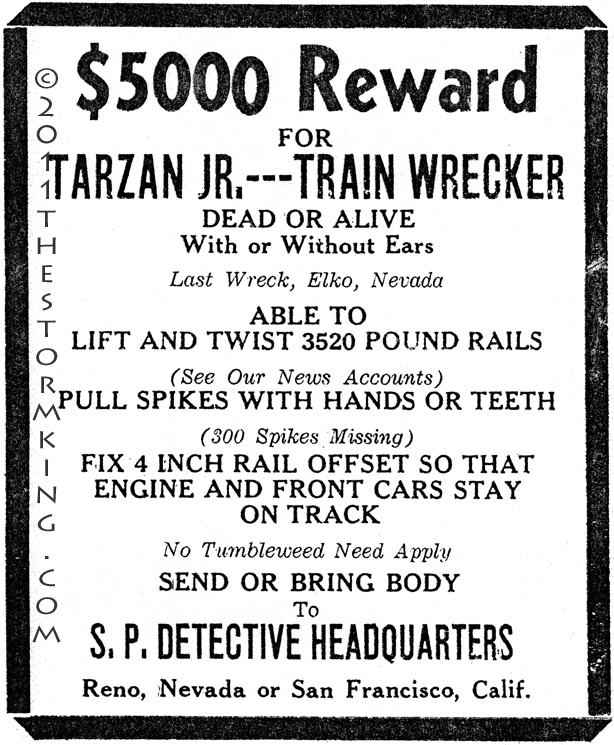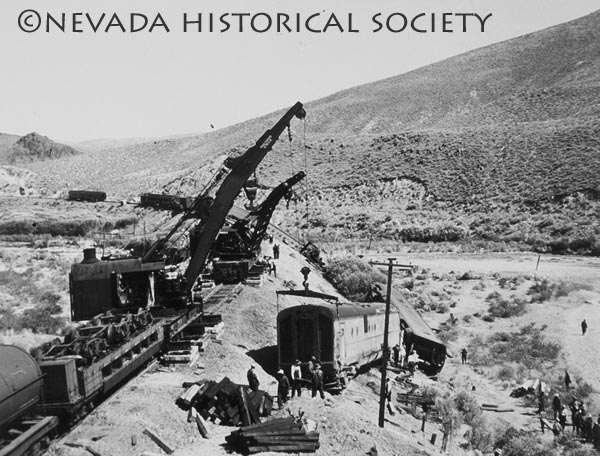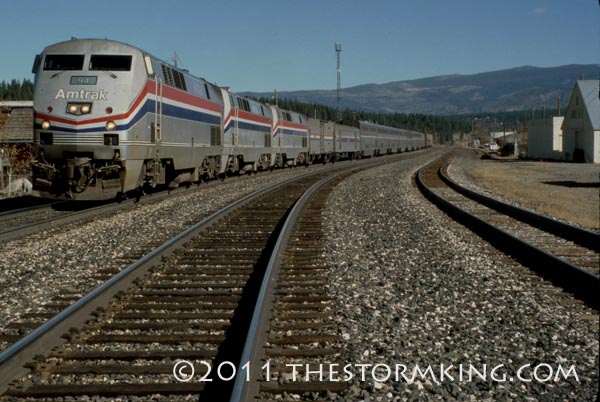 |
|
|
Follow Mark on Facebook for more stories |
||
 |
|||||||||||
|
Tahoe Nugget #214: Nevada Train Wreck: Unsolved Mystery Depending on whom you want to believe, the 1939 train wreck in Harney, Nevada, was either the result of the engineer speeding too fast for the tracks, or according to Southern Pacific officials, a deliberate and murderous act of sabotage. The mystery of what really happened at Harney has never been solved, but these facts are indisputable. In August 1939, the deadliest railroad disaster in Nevada's history killed two dozen people and virtually destroyed Southern Pacific's finest passenger train. First introduced into service in January 1938, the City of San Francisco, was deemed the "world's most superlative train." A technological marvel in engineering that cost $2 million to build, she was proclaimed the 'largest, fastest, most beautiful, powerful, and luxurious streamliner ever designed." The elegant train pulled 17 coaches instead of the normal 11, and was capable of speeds in excess of 100 mph. When placed into service, the hi-tech train cut 19 hours from the fastest previous time on its route between Chicago and Oakland, California.
Like the pioneers and wagon trains before it, the transcontinental railroad followed the Humboldt River as it meandered west across Nevada. But instead of a farm wagon hitched behind plodding oxen, the City of San Francisco raced over the high desert at speeds averaging between 75 and 110 mph. On Saturday, August 12, 1939, the setting sun glinted off the City of San Francisco's silver metallic skin as it streaked across the desert. Outside it was blistering hot, but passengers aboard the air-conditioned streamliner took no notice as they enjoyed dinner, cocktails, or playing cards.
Chief Engineer Ed Hecox, one of SP's top engineers, manned the throttle. The track followed the Humboldt into the west end of Paradise Canyon where it approached bridge No. 4 that spanned the river. Always alert, Hecox noticed a clump of sagebrush lodged against the outside rail but thought little of it. But as soon as the lead locomotives reached that part of the track the train derailed. The forward locomotives slid off the rails, plunged across the bridge, then plowed through the wooden track ties and rock ballast before coming to a stop upright well past the river. Out of control, the streamliner's coaches snapped their connections with the engines and slammed into the old iron bridge, with several cars falling to the riverbed. The violent destruction lasted less than a minute, but the worst train wreck in Nevada history killed 24 passengers and crewmembers and injured 121 others. Only 31 escaped unscathed.
From the outset, Southern Pacific officials contended that sabotage was the cause of the derailment. Dan O'Connell, chief special agent for the SP out of San Francisco, stated that at the site of the derailment the spikes had been pulled out of a 30-foot section of rail, the rail then forced about 5 inches inward and then the track respiked. To increase public interest and help in the investigation, SP posted a $5,000 reward for information leading to the arrest and conviction of the vandals; it was later increased to $10,000. O'Connell's investigation was massive. Witness tips poured in as citizens hoped to cash in on the $10,000 reward and detectives interrogated 93,110 men over the next six months. All were cleared. Newspaper editorials insinuated that SP was covering up the real cause of the wreck.
The outbreak of World War II in 1941 took SP agents off active pursuit, but O'Connell never let up — by the time he retired in 1944, he and his men had interviewed or studied reports on 210,437 suspects. Despite this widespread criminal investigation, SP has never prosecuted anyone for the crime and the $10,000 reward was never claimed.
Some survivors of the wreck filed legal proceedings against the railroad. Despite litigation and bad press, Southern Pacific played hard ball with the victims. Passenger F.S. Foote typified the railroad's handling of the situation. Foote suffered a broken jaw, broken sternum, four cracked ribs, internal hemorrhaging, a brain concussion, and a punctured lung. SP reimbursed Mr. Foote $7,500 which barely paid for his hospital and medical expenses.
In addition, Southern Pacific sent Foote $5.00, which represented the amount he had paid for the extra fare to ride on the luxury streamliner. The money came with a note: "While technically a refund of only the value of the unused portion of the ticket would be in order, we are refunding the full amount of the extra fare due to the interruption to our service. Trust that we shall have the pleasure of serving you in the future." |
|||||||||||
|

